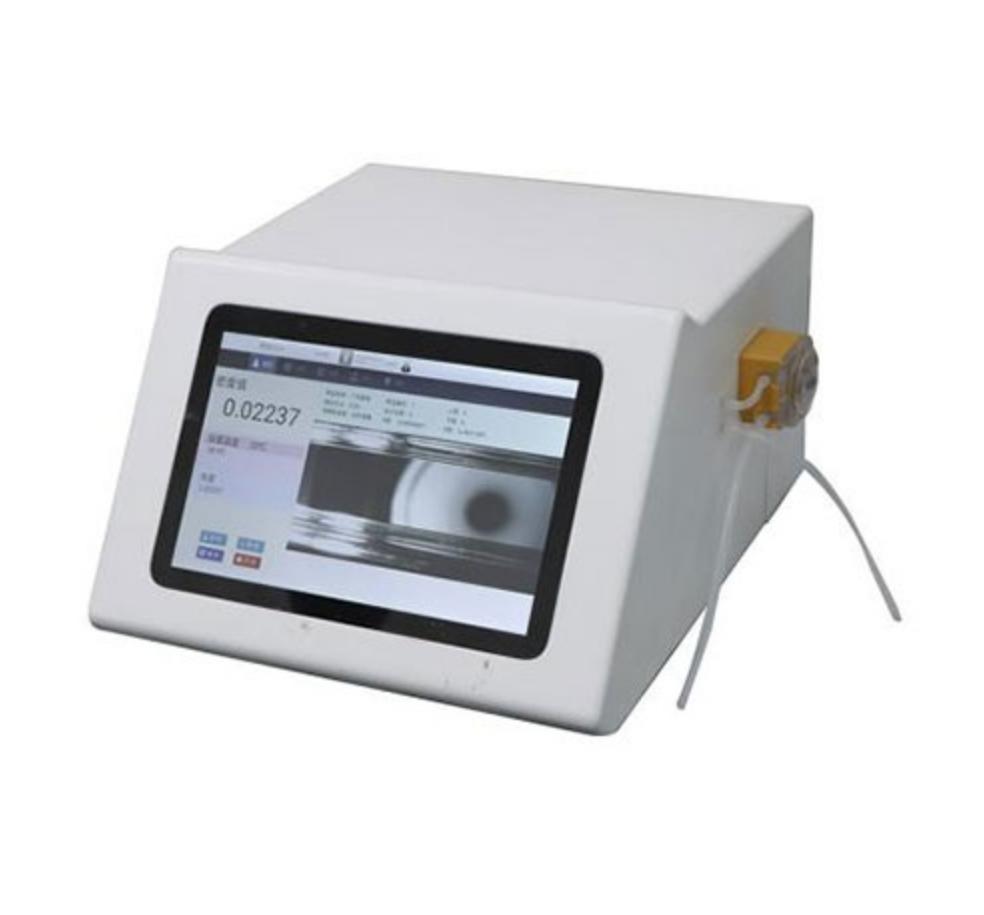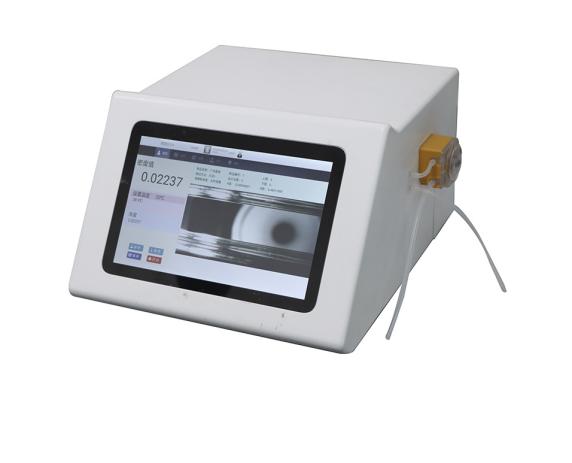Density is a fundamental physical property that plays a crucial role in various industries and scientific fields. A density meter is an instrument designed to accurately measure the density of liquids and sometimes solids. These instruments utilize different measurement techniques based on well-established scientific principles. In this article, we will focus on the topic of how a density meter work, exploring the working principle of a density meter and how it enables precise density measurements.

Working Principle of a Density Meter
The working principle of a density meter is based on Archimedes’ principle of buoyancy. To calculate the density of an object immersed in a fluid, the buoyant force experienced by the object is measured. Here’s a step-by-step guide to using a density meter:
Buoyancy Measurement
The sample is placed in a measurement chamber or cell within the density meter. A transducer or sensor that measures the buoyant force exerted on the object is often installed in the chamber.
Reference Measurement
Before measuring the sample, the density meter is calibrated using a known density reference material. This calibration provides a foundation for reliable density measurements.
Sample Introduction
The sample is put into the measurement chamber, which can be either liquid or solid. The chamber may have provisions for temperature control to ensure consistent measurements.
Buoyant Force Measurement
When a sample is immersed in a fluid, it experiences an upward force known as the buoyant force. This force is created by the sample’s displacement of the fluid.
Sensor Detection
The buoyant force acting on the sample is detected by the density meter’s transducer or sensor. This measurement is usually translated into an electrical signal that the equipment can process.
Density Calculation
The density meter determines the sample’s density using the calibration data obtained from the reference material. The calibration data shows a relationship between the measured buoyant force and the matching density value.
Display and Output
The estimated density value is shown on the density meter’s screen or output to a connected device for additional study or recording. Some density meters also provide additional information such as temperature compensation or specific gravity.
It is crucial to remember that different types of density meters may have different operating principles and measurement procedures. Some density meters, for example, use vibrating elements or oscillation mechanisms to measure density. The essential principle of measuring buoyant force, however, stays constant.

Working Mechanism of a Density Meter
Depending on the type of density meter, several operating mechanisms are used. In this section, we will look at the working mechanisms of two typical types of density meters: oscillation-based density meters and vibrating element-based density meters.
Working Mechanism of a Oscillation-Based Density Meters
Oscillation-based density meters, such as oscillating U-tube and vibrating tube density meters, use the oscillation frequency principle to calculate density. The following steps comprise the working mechanism:
Oscillation Initiation
Within the chamber or tube, the density meter causes an oscillation or vibration. This oscillation is usually produced by a piezoelectric or vibrating device.
Frequency Measurement
The density meter’s sensors or transducers measure the oscillation’s resonance frequency. The bulk and density of the sample within the chamber determine the frequency.
Comparison with Reference
The measured resonant frequency is compared to a known reference frequency derived from a reference sample or calibration standards. The reference frequency is associated with a known density value.
Density Calculation
The density meter determines the density of the sample based on the frequency difference between the measured resonant frequency and the reference frequency using the calibration data.
Working Mechanism of a Vibrating Element-Based Density Meter
To determine density, vibrating element-based density meters, such as tuning fork density meters, use the damping effect on a vibrating element immersed in a fluid. The following steps comprise the working mechanism:
Vibrating Element: A vibrating element, such as a quartz crystal or a tuning fork, is set in motion at a given frequency by the density meter.
Damping Effect: When the vibrating element is immersed in the sample fluid, the density of the fluid influences the vibration’s damping effect. Higher density fluids produce more damping.
Frequency Shift Measurement: The density meter’s sensors or transducers measure the shift in frequency of the vibrating element induced by the damping effect of the sample fluid.
Calibration and Conversion: The density meter is calibrated using known density reference standards to create a relationship between frequency shift and density. Using calibration data, the density meter subsequently transforms the frequency shift into a matching density value.
The working mechanisms of density meters are designed to measure the influence of density on the oscillation or damping characteristics of the sample. By comparing the measured parameters with calibration data, density meters accurately determine the density of liquids and sometimes solids.
Summary
A density meter is a useful tool for estimating the density of liquids and solids, which can be used to aid in quality control, process optimization, and research. Density meters give accurate and dependable density readings by leveraging principles such as Archimedes’ law and new measurement techniques, contributing to breakthroughs.


